India’s rich history, spanning thousands of years, fills its people with pride. This is the land of epic tales like the Mahabharata and Ramayana, which celebrate vast knowledge, grand infrastructures, immense wealth, and countless temples. Unfortunately, many temples were lost or destroyed due to invasions and the rule of the Mughals and British. Sadly, these temples were not just destroyed but often converted into mosques. Places that once resonated with ancient Sanskrit music, prayers, and slokas now bear no trace of their Hindu origins. The Muslim rule in India led to the loss of some of the country’s most treasured temples and knowledge centres. Here are some popular temples converted into a Mosque.
Organiser E Exit poll Lok Sabha Elections 2024
Ram Janmabhoomi Mandir Ayodhya – Babri Masjid
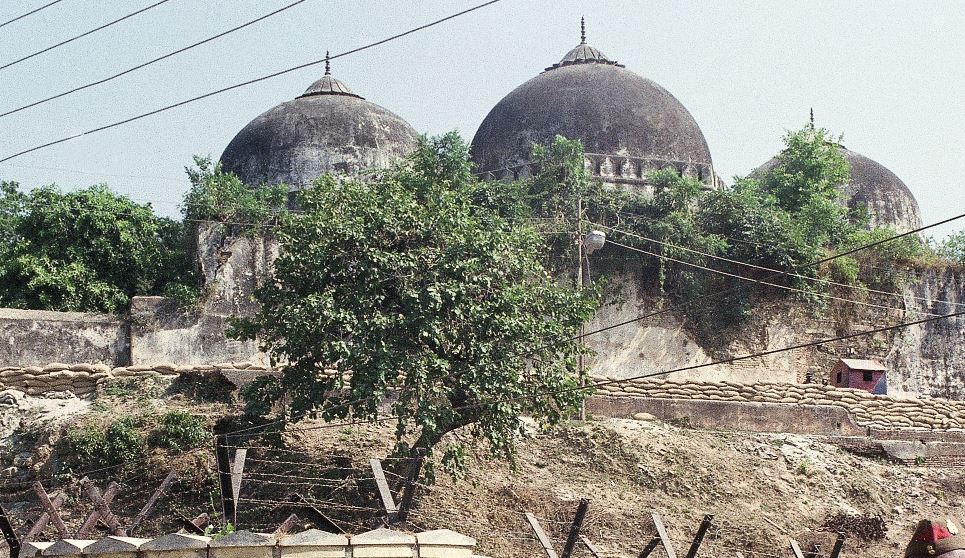
According to Hindus, the land where the Babri Mosque was built in 1528 is the ‘Ram Janmabhoomi’ (birthplace of Shri Ram). It is believed that Mir Baqi, a general of Mughal king Babur, destroyed a pre-existing Ram Mandir to construct the Babri Masjid. Both communities have worshipped at this “mosque-temple,” with Muslims praying inside the mosque and Hindus outside it. Some claim that Babur demolished the temple, while others believe earlier Islamic rulers destroyed it, as the mosque’s architecture doesn’t match Babur’s era. However, it is widely acknowledged that a temple once existed there, and people have worshipped Bhagwan Ram at this site for centuries. Today, the Ram Mandir is being constructed at this historically significant location.
Krishna Janmabhoomi Temple – Shahi Idgah Mosque
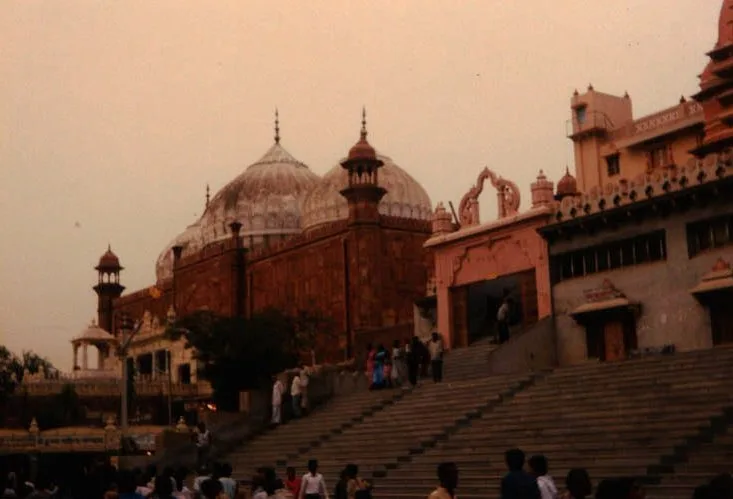
The Sri Krishna Janmabhoomi Temple, also known as the Krishna Janmasthan or Kesava Deo Temple, is located in Mathura, Uttar Pradesh, the legendary birthplace of Bhagwan Krishna. It is believed that Bhagwan Krishna’s grandson, Vajra, originally built the temple 5,000 years ago. The temple saw a significant upgrade during the reign of Chandragupta II around 400 AD. After being demolished in 1017 AD, it was rebuilt by Bir Singh Bundela, a king under the Mughal Empire. However, Emperor Aurangzeb later destroyed the temple again and constructed the Shahi Idgah Mosque above the Kesava Deo Temple. The site holds deep historical and religious significance, symbolising the enduring legacy of Bhagwan Krishna in Hinduism.
Kashi Vishwanath Temple – Gyanvapi Mosque
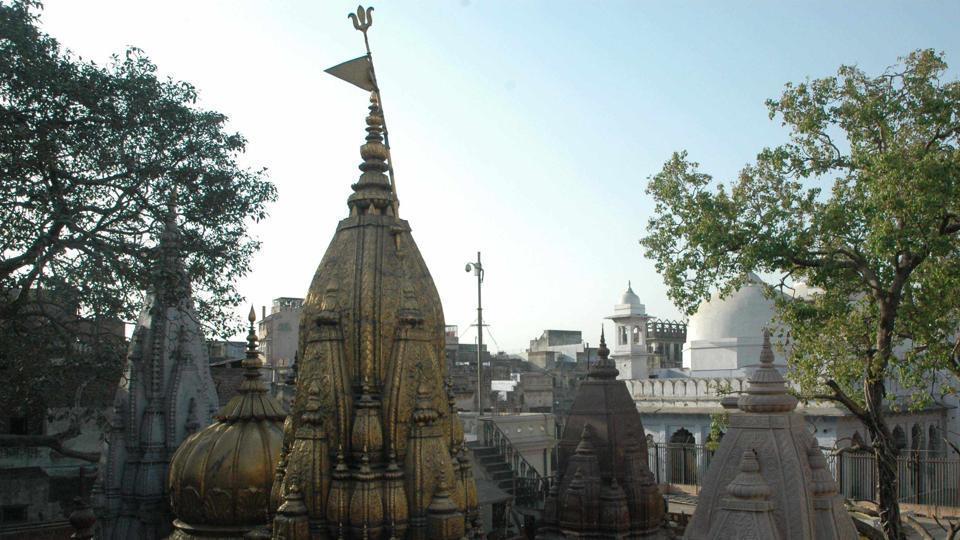
The Kashi Vishwanath Temple, dedicated to Bhagwan Shiva, is one of the most renowned Hindu temples located in Varanasi, the holiest city for Hindus. It is a significant pilgrimage site where Hindus are expected to visit at least once in their lifetime and where many pour the ashes of their ancestors into the River Ganges. The main deity, Vishwanatha or Vishweshwara, means the Ruler of the Universe. Varanasi claims to be the oldest living city in the world, with a documented history of 3,500 years. However, the original Jyotirlinga of Kashi Vishwanath is missing. The old temple was destroyed multiple times during the Mughal invasions, with historical records indicating that Muslim rulers repeatedly demolished it.
Rudra Mahalaya Temple – Jami Masjid
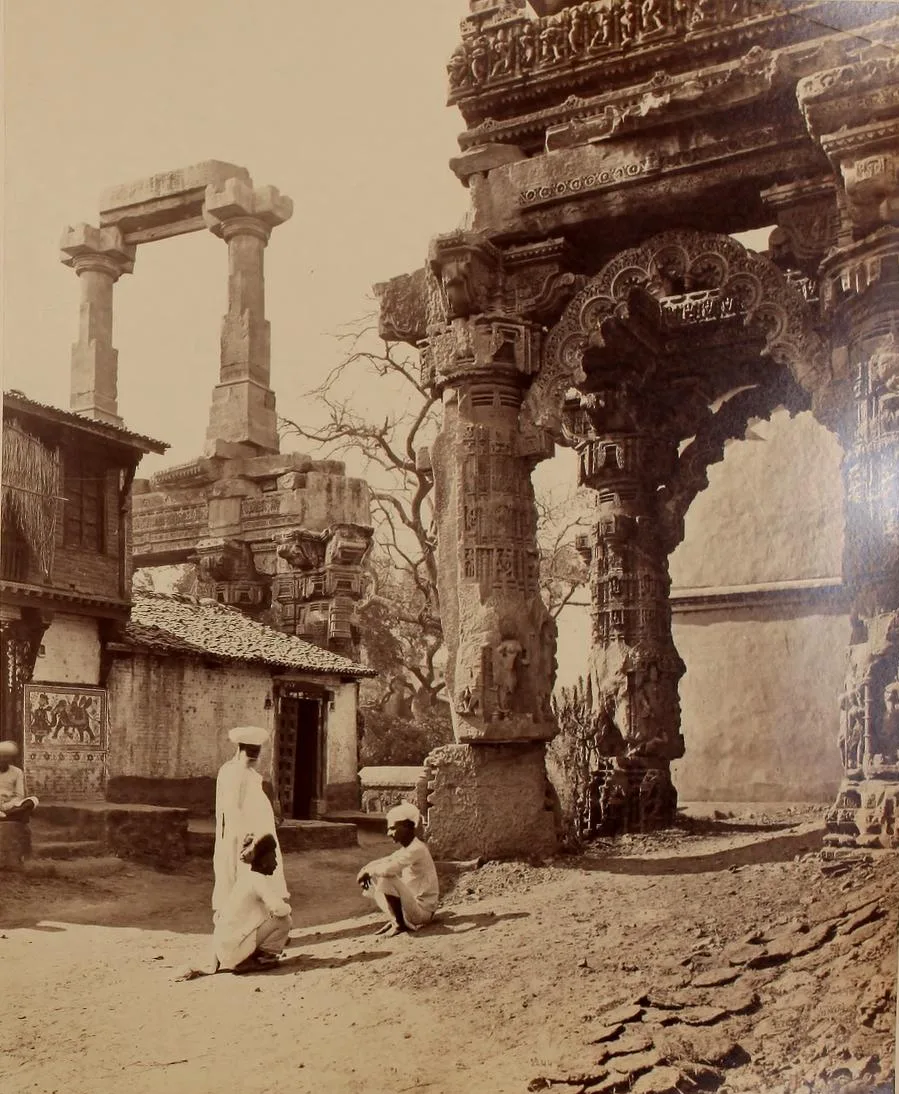
The Rudra Mahalaya temple complex, located in Siddhpur, Patan district of Gujarat, is a significant historical site. Siddhpur, an ancient holy town on the banks of the Saraswati River, is named after Siddhraj Jaisinh, who completed the magnificent temple in the 12th century AD. The construction began in 943 AD by Mularaja Solanki, the founder of the Solanki dynasty, and was completed by Siddharaj Jaisinh in 1140 AD. The temple was dismantled between 1410-1444 by Alauddin Khilji and later further demolished by Ahmed Shah I, who converted part of it into the Jami Masjid.
Adinath Temple – Adina Mosque
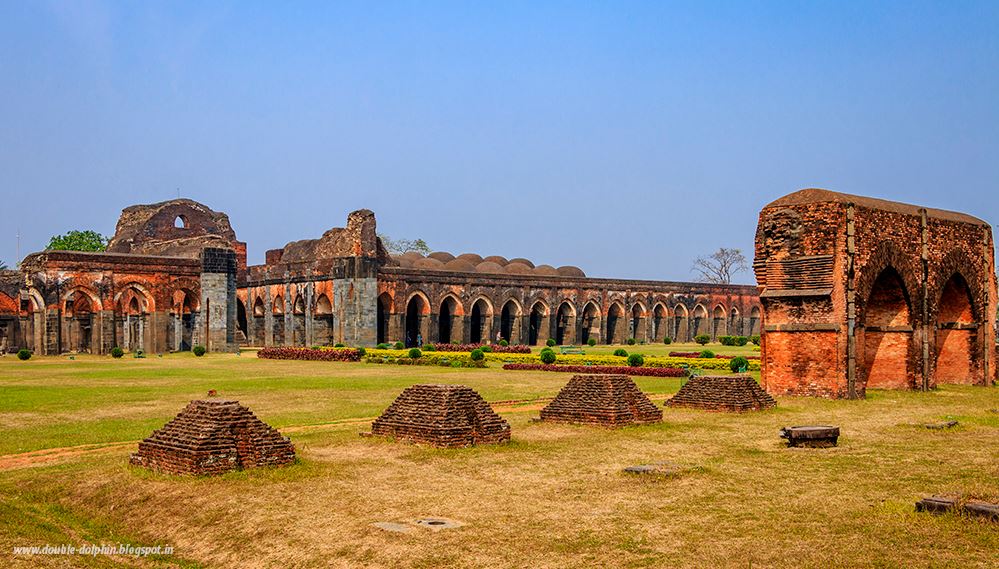
Located in Pandua, West Bengal, the Adina Mosque, built by Sikandar Shah in 1358-90 AD, was erected over a grand ancient Hindu temple and is now considered one of India’s largest mosques. Legend suggests it was originally a Hindu temple dedicated to Bhagwan Shiva, later converted into a mosque. Remnants of Hindu deities adorn the mosque’s gateways and walls, with interior carvings depicting Hindu designs. Signs of Hindu influence abound, with stone slabs featuring Ganesh and Nataraj statues, as well as crests of doorways displaying Hindu motifs. The name “Adina” of Adina mosque is also believed to come from the word “Adinath”, depicting Bhagwan Shiva.
Bhojshala – Kamal Maula Mosque
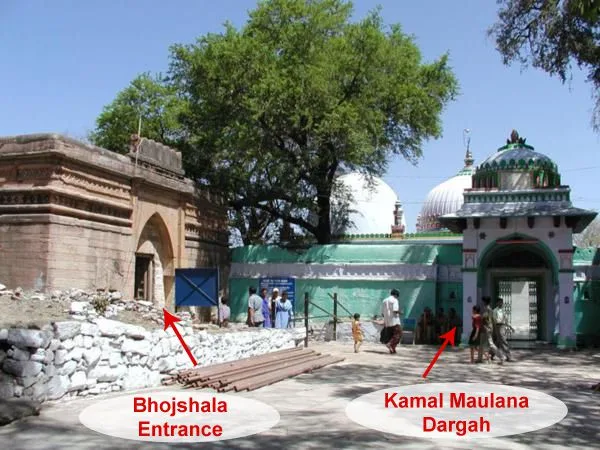
Bhojshala, an ancient temple of Mata Saraswati, was built in 1034 AD by Raja Bhoj, whose vast empire included regions from Rajasthan to Odisha. Located in the Dhar district of Madhya Pradesh, it serves as a major educational centre. The Islamic incursion began in 1269 AD when Kamal Moulana entered Malwa and later provided intelligence to Alauddin Khilji. In 1305 AD, Khilji attacked Bhojshala, killing 1200 Hindu students and teachers. Dilawar Khan later destroyed part of the Saraswati Temple and converted it into a dargah. Subsequent Muslim rulers continued these efforts, with Mehmudshah building the Kamal Moulana Makbara on the site. Before 1997, Hindus could only visit Bhojshala but couldn’t perform puja. CM Digvijaya Singh’s 1997 order allowed Muslims to offer Namaz on Fridays while restricting Hindu access, except on Vasanta Panchami for performing puja.
Bhadrakali Temple – Jama Masjid
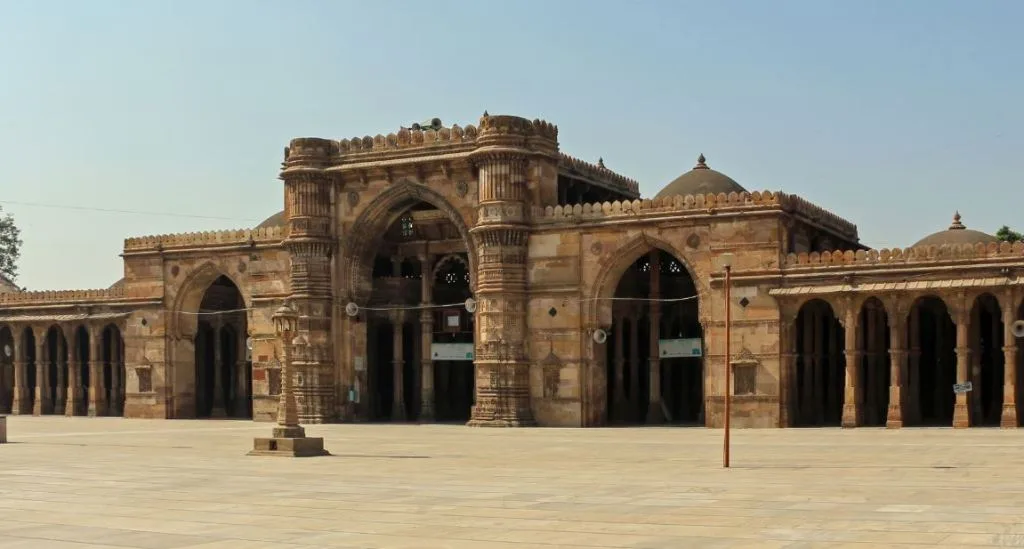
The Jama Masjid, constructed in 1424 CE in Ahmedabad, was originally a Hindu temple dedicated to Mata Bhadrakali. Initially named Bhadra after the goddess, the city was later known as Karnavati, Rajnagar, and Asaval in different periods. Built by Rajput Parmar kings of Malwa, the temple features intricate filigree carvings of flower and Paisley motifs, lotus flowers, and celestial dancers on its pillars. The presence of over 100 elaborately carved pillars in the temple complex suggests its Hindu origin, as mosques typically have open halls for mass prayers, while Hindu temples feature pillar carvings depicting stories from sacred texts like the Puranas and Mahabharata.
Vijay Temple – Bijamandal Mosque
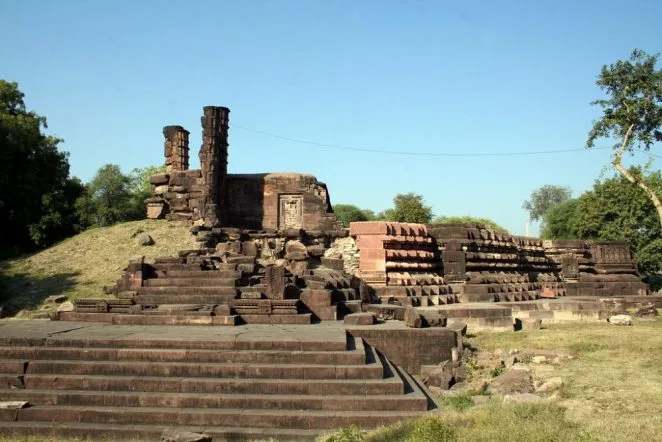
Vidisha, located in Madhya Pradesh, is renowned for the Bijamandal Mosque, which holds a poignant history of Hindu temples being converted into mosques during Islamic rule. Originally dedicated to Mata Charchika by the Paramar Kings, the temple’s materials were repurposed to construct the Bijamandal Mosque. Inscriptions at the site indicate that the temple honoured Mata Vijaya, the deity of victory, and was built by King Naravarman of Malwa. The name “Bija” or “Bijaya” stems from the distortion of the original title of the Mata Vijaya Rani.
The presence of mosques standing atop ancient Hindu temples echoes a complex history of religious transformation and cultural assimilation in India.


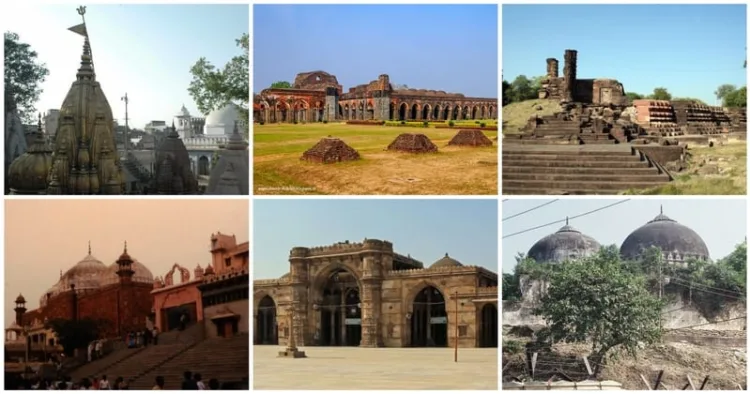
















Comments